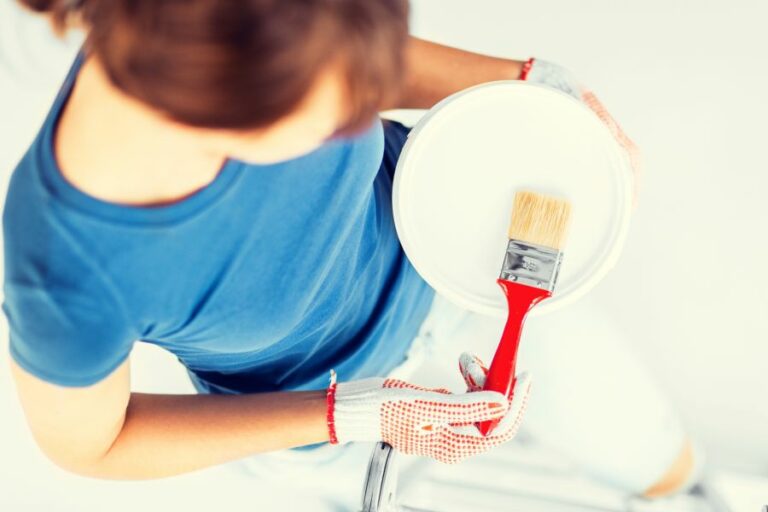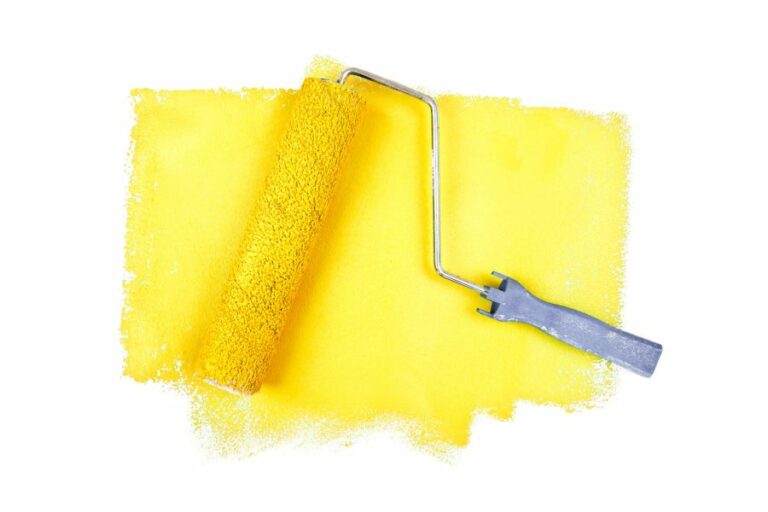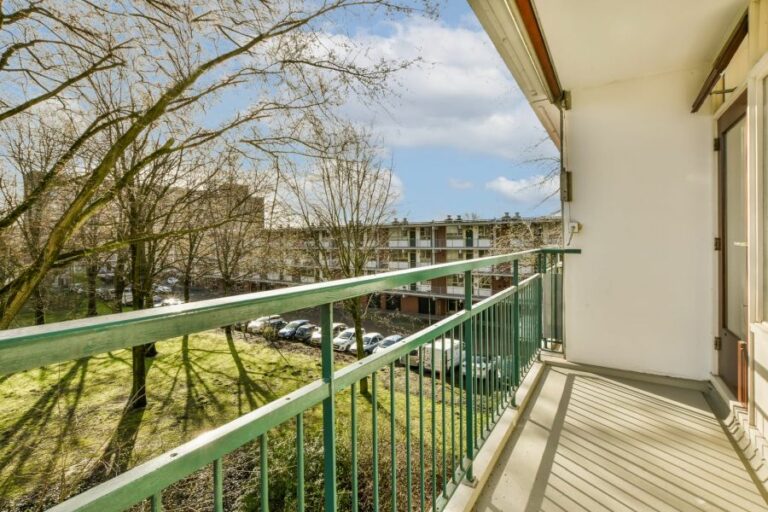Outdoor Patio Cement Paint, 25 Things You Should Know
Transform your outdoor patio into a vibrant, inviting space with the power of cement paint! Let’s explore how you can effortlessly elevate your exterior design using durable and weather-resistant paint specifically designed for concrete surfaces. Discover the best techniques, trending colors, and expert tips to achieve a stunning patio makeover that lasts.
Outdoor patio cement paint:
Outdoor patio cement paint provides enhanced durability, protection, aesthetic appeal, and easy maintenance for your patio. Consider the paint type, color, and finish when choosing the right cement paint, and be sure to use a primer and sealer before painting. Follow a step-by-step guide for surface cleaning, crack repair, primer application, painting, and sealing. Use high-quality products designed for outdoor cement surfaces and adhere to manufacturer guidelines for best results, ensuring lasting beauty and protection for your patio.

Jump into this informative guide to discover the best outdoor patio cement paint options available. Learn about different types, finishes, and application techniques to revamp your patio space, ensuring longevity and vibrant, visually appealing results. Happy painting!
Contents
- 1 Exterior Patio Concrete Paint
- 2 Which type of paint is most suitable for an outdoor cement patio?
- 3 Is it Possible to Apply Paint on an Outdoor Concrete Patio?
- 4 Is Outdoor Concrete Painting Durable and Long-Lasting?
- 5 Is Outdoor Concrete Paint Effective?
- 6 What is the Most Suitable Paint Choice for Exterior Concrete Slabs?
- 7 What is the Most Effective Method for Painting Exterior Concrete Surfaces?
Exterior Patio Concrete Paint
An outdoor patio is a great place to relax and unwind with friends and family. However, over time, the cement in your patio may become discolored, cracked, or otherwise damaged. Outdoor patio cement paint is the perfect solution to transform your old, weathered patio into a new, fresh, and inviting space.
• Benefits of Outdoor Patio Cement Paint
– Enhanced Durability and Protection
One of the main benefits of using cement paint for your outdoor patio is its ability to provide added durability and protection against harsh weather conditions such as rain, sun, and snow.
This type of paint contains special binders and additives that adhere strongly to cement surfaces, making it resistant to peeling, chipping, and fading.
– Aesthetic Appeal
Outdoor patio cement paint can instantly enhance the visual appeal of your space. It is available in a wide variety of colors and finishes, allowing you to create a custom look that matches your existing decor or reflects your personal style.
– Easy Maintenance
Cement paint is relatively easy to maintain, as it creates a smooth, sealed surface that is resistant to dirt, grime, and moisture. This makes it simple to clean and requires less frequent touch-ups compared to other types of outdoor flooring materials.
• Choosing the Right Cement Paint for Your Patio
When selecting an outdoor patio cement paint, there are a few factors to consider to ensure optimal results:
– Type of Paint
There are two primary types of cement paint available: epoxy-based paint and acrylic latex paint. Epoxy-based paints are highly durable and resistant to water, making them an excellent choice for areas exposed to heavy foot traffic and harsh weather conditions.
Acrylic latex paints, on the other hand, are more breathable and offer better color retention, but they may not be as durable as epoxy-based paints.
– Color and Finish
Choose a color and finish that complements your existing patio decor and style. Keep in mind that lighter colors may show dirt and wear more easily than darker shades, so consider the level of maintenance you are willing to invest in as you make your selection.
Additionally, choose from gloss, semi-gloss, or matte finishes for your outdoor patio cement paint.
– Primer and Sealer
To ensure the best adhesion and longevity of your paint job, it is essential to use a concrete primer and sealer before applying paint. The primer prepares the surface for paint, while the sealer helps provide a moisture-resistant barrier, protecting the paint from water and other environmental elements.
• Steps to Apply Outdoor Patio Cement Paint
With the right tools and materials in hand, it’s time to begin the process of painting your outdoor patio. Here’s a step-by-step guide:
– Step 1: Clean the Surface
Ensure your patio is clean and free of debris, dirt, and grime before painting. You can use a pressure washer or a stiff-bristle brush with mild detergent and water solution to remove any buildup.
– Step 2: Repair Cracks and Damaged Areas
Inspect your patio for cracks or damaged areas and repair them using a cement patching compound. Allow the repaired areas to cure according to the manufacturer’s specifications.
– Step 3: Apply Primer
Once the surface is clean and cracks have been repaired, apply a concrete primer according to the manufacturer’s instructions. Allow the primer to dry completely.
– Step 4: Paint the Patio
Finally, it’s time to apply your chosen outdoor patio cement paint. We recommend using a roller or sprayer to evenly and efficiently cover your patio surface. Apply the paint in thin, even coats, allowing each coat to dry thoroughly before applying the next one.
Typically, two coats of paint are sufficient for adequate coverage.
– Step 5: Apply Sealer
After the paint has dried completely, apply a concrete sealer according to the manufacturer’s instructions. This will provide added durability and protection for your newly painted patio.
• Tips for Success
To achieve the best results when painting your outdoor patio, keep these tips in mind:
- Always follow the manufacturer’s guidelines for application and drying times for primers, paints, and sealers.
- Choose high-quality products designed specifically for outdoor use on cement surfaces.
- To avoid scuff marks or marks, wait at least 48 hours after applying the sealer before placing furniture, rugs, or other heavy items on your newly painted patio.
In conclusion, outdoor patio cement paint is an excellent solution to refresh and rejuvenate your outdoor living space. With proper preparation, application, and maintenance, a painted cement patio can provide lasting beauty and protection. So, grab your paintbrush and start transforming your patio today!
Which type of paint is most suitable for an outdoor cement patio?
A well-painted outdoor cement patio not only enhances the beauty of your backyard but also makes your outdoor space more inviting and enjoyable. Choosing the right paint for your outdoor cement patio is crucial for achieving the best results and improving the longevity of the paint job.
• Types of Paints Suitable for Outdoor Cement Patios
– Acrylic Latex Paint
Acrylic latex paint is an excellent choice for painting outdoor cement patios because of its durability, versatility, and ease of application. This type of paint is water-based and dries quickly, making it ideal for outdoor use.
Additionally, acrylic latex paint resists fading, cracking, and peeling, ensuring a long-lasting finish.
Advantages of Acrylic Latex Paint
- Easy to apply and clean up
- Dries quickly
- Resistant to fading, cracking, and peeling
- Available in a wide range of colors and finishes
Disadvantages of Acrylic Latex Paint
- May not adhere well to poorly prepared surfaces
- Could be less durable than other types of paint
– Epoxy Paint
Epoxy paint is another suitable option for outdoor cement patios. It is a two-component paint that provides a durable, chemical-resistant, and waterproof finish. The epoxy paint consists of a base and a hardener, which, once mixed, create a strong bond to the surface, ensuring long-lasting protection.
Advantages of Epoxy Paint
- Highly durable
- Chemical and water-resistant
- Ideal for high-traffic areas
- Easy to clean
Disadvantages of Epoxy Paint
- Requires thorough surface preparation
- The application process can be more complex than other types of paint
– Masonry Paint
Masonry paint is specifically designed for use on concrete and other porous surfaces, making it a perfect choice for outdoor cement patios. It provides excellent adhesion and forms a barrier against water penetration, protecting the patio from moisture damage.
Advantages of Masonry Paint
- Excellent adhesion to porous surfaces
- Provides a waterproof barrier
- Resistant to mold and mildew
- Available in various textures and finishes
Disadvantages of Masonry Paint
- May require multiple coats for even coverage
- Can be more expensive than other types of paint
• Surface Preparation Tips for Outdoor Cement Patios
– Cleaning the Surface
Before painting your outdoor cement patio, it is essential to clean the surface thoroughly. This will help ensure proper paint adhesion and prevent any dirt or debris from affecting the appearance of the finished paint job.
- Remove loose dirt, leaves, and other debris using a broom or leaf blower
- Use a pressure washer or garden hose to remove any built-up dirt or grime
- If necessary, use a cleaner designed for concrete surfaces to remove any tough stains or mold
- Allow the surface to dry completely before proceeding with the painting process
– Repairing Cracks and Holes
Minor cracks and holes should be repaired to create an even surface for painting. Use a concrete patching compound or concrete caulk to fill any gaps.
- Apply the patching compound or caulk according to the manufacturer’s instructions
- Smooth the surface to ensure an even finish
- Allow the repaired area to dry and cure according to the manufacturer’s recommendations
– Priming the Surface
Using a primer is recommended, especially for new or unsealed concrete surfaces. Priming will help the paint adhere better and improve the overall appearance of the final paint job.
- Choose a primer designed specifically for concrete surfaces
- Apply the primer according to the manufacturer’s directions
- Allow the primer to dry completely before applying paint
• Applying the Paint
When painting your outdoor cement patio, follow these tips for the best results:
- Choose a day with good weather, preferably mild temperatures, and low humidity
- Use a paint roller or brush to apply the paint, depending on the desired finish and the size of the patio
- Apply multiple thin coats of paint, allowing each coat to dry according to the manufacturer’s recommendations
- When the final coat is dry, inspect the patio for any missed spots or needed touch-ups
• Expert Recommendations for Outdoor Cement Patio Paint
Based on personal experience, acrylic latex paint is an excellent choice for most outdoor cement patio projects. It is easy to apply, provides good coverage, and offers a wide range of colors and finishes. For high-traffic areas or areas exposed to moisture, epoxy paint may be a more durable option.
Finally, masonry paint is an ideal choice for those looking for a highly specialized paint option specifically designed for concrete surfaces.
By following these guidelines and choosing the right paint for your outdoor cement patio, you can achieve a beautiful, durable, and long-lasting finish that will enhance your outdoor living space for years to come.
Is it Possible to Apply Paint on an Outdoor Concrete Patio?
Absolutely, you can paint an outdoor concrete patio! With the right preparation and materials, painting a concrete patio can revitalize an old, dull surface while protecting it from the elements.
• Preparing the Concrete Patio for Painting
1. Inspect and Repair Surface Damage
Before painting, it is essential to ensure the concrete surface is free of any damage, such as cracks or chipping. If you notice any imperfections, use a concrete repair product to fix any issues.
For minor cracks and fissures, apply a concrete patch compound. For larger repairs, consider using a concrete resurfacer.
2. Clean the Surface Thoroughly
A clean surface is key for paint adhesion. Remove all dirt, debris, and loose paint chips by sweeping and hosing down the area. If necessary, use a pressure washer to remove stubborn grime or stains.
Be sure to use appropriate cleaning agents, such as a trisodium phosphate solution, to remove oil and grease stains. Allow the patio to dry completely before proceeding.
3. Remove Old Paint (If Necessary)
If your patio has been previously painted, strip off the old paint using a paint stripper or by using a rented concrete grinder. Ensure all paint has been removed to ensure proper adhesion of the new paint.
4. Etch the Surface (If Necessary)
For smooth, non-porous surfaces or surfaces previously treated with a concrete sealer, etching is required to prepare the surface for painting. Etching solutions, such as muriatic acid or a commercial concrete etching product, should be used according to the manufacturer’s instructions.
This process helps open up the concrete pores, allowing for better paint adhesion.
• Choosing the Right Patio Paint
It is crucial to select the right paint formulated specifically for outdoor concrete surfaces. There are two main types of paint suitable for concrete patios: epoxy and acrylic.
1. Epoxy Paint
Epoxy-based paints are durable, long-lasting, and provide excellent resistance to chemicals, oils, and abrasion. These paints are ideal for high-traffic areas and garages. However, they can be more challenging to apply and will likely require a primer for proper adhesion.
2. Acrylic Paint
Acrylic or water-based paints are easier to apply, dry faster, and provide good adhesion without the need for a primer. This type of paint is ideal for outdoor concrete patios exposed to the elements. Look for patio-specific concrete paint labeled as UV and water-resistant to ensure longevity.
I recommend using acrylic paint for your outdoor concrete patio, as it is easier to apply, requires less preparation, and provides adequate protection against weather conditions.
• How to Paint Your Concrete Patio
1. Apply a Concrete Primer (Optional)
Though not always necessary, especially for acrylic paints, applying a concrete primer will enhance paint adhesion and increase durability. Choose a primer specifically formulated for outdoor concrete surfaces, and follow the manufacturer’s instructions for application and drying times.
2. Paint the Patio
Once the patio is prepped, primed, and dry, begin painting. Use a roller, brush, or paint sprayer to apply a thin, even layer of paint. To ensure proper coverage, it is best to apply multiple thin coats rather than one thick coat. Follow the manufacturer’s recommendations for drying times between coats.
3. Apply a Sealer (Optional)
For added protection and to enhance the paint’s longevity, consider applying a clear concrete sealer. A sealer will help protect the painted surface from wear and tear, water damage, and fading.
Choose a sealer compatible with the type of paint used on the patio, and follow the manufacturer’s application and drying instructions.
• Maintaining Your Painted Concrete Patio
After completing the painting process, it is essential to maintain your patio to preserve its appearance and prolong the paint’s lifespan.
Regular cleaning with a hose or pressure washer will help keep the surface looking fresh. Additionally, reapply a clear sealer every one to three years, depending on wear and weather conditions, to provide an extra layer of protection.
In conclusion, painting an outdoor concrete patio is not only possible but can breathe new life into your outdoor living space. With proper preparation, choosing the right paint, and regular maintenance, your painted patio will provide years of enjoyment and enhanced curb appeal.
Questions | Answers |
|---|---|
Can you paint the outdoor concrete patio? | Yes, you can paint an outdoor concrete patio by selecting the appropriate type of paint, preparing the surface, and following the proper application process. |
Is Outdoor Concrete Painting Durable and Long-Lasting?
Painting outdoor concrete surfaces can be an effective and affordable way to spruce up your home’s exterior. Many homeowners opt for this method to rejuvenate their driveways, patios, and walkways. However, one question often arises: does painting outdoor concrete last?
To make a proper assessment, it’s essential to understand the factors that impact the durability of paint on outdoor concrete surfaces, such as surface preparation, weather conditions, and the type of paint chosen.
• Choosing the Right Concrete Paint
The first step in achieving lasting results when painting outdoor concrete is selecting the right paint. Not all paints are suitable for outdoor use, and using the wrong product can lead to premature wear and fading. Here are some tips to keep in mind when choosing concrete paint:
– Opt for High-Quality Concrete Paints
Investing in high-quality paint specifically designed for outdoor concrete surfaces is crucial for durability. These paints contain additives that protect the surface from UV rays, water, and other environmental factors that contribute to deterioration.
Popular options include epoxy-based coatings, latex-based paints, and acrylics.
– Choose a Paint with a High Level of Urethane
Urethane additives in concrete paint increase the paint’s durability and resistance to chemicals, abrasion, and chipping. Higher concentrations of urethane in the paint generally translate to better longevity on outdoor concrete surfaces.
• Preparing the Concrete Surface
Before attempting to paint your outdoor concrete, thorough surface preparation is required to ensure the paint adheres correctly and lasts for an extended period. Follow these steps to prepare the concrete:
– Clean the Surface
Before painting outdoor concrete, it’s crucial to clean the surface thoroughly, removing any dirt, stains, and debris that may be present. Pressure washing is a highly effective method for surface cleaning.
Consider using a mild detergent or cleaner specifically designed for concrete surfaces to break down stubborn stains and grime.
– Repair Any Damage
Inspect the concrete surface for any signs of damage, such as cracks or chips. These imperfections can negatively impact the paint’s durability and may allow moisture to seep in, causing additional damage.
Use a suitable concrete repair product to fill in any cracks or chips, and let it cure completely before proceeding.
– Apply a Concrete Primer
Although not always necessary, applying a concrete primer to the surface can help to ensure optimal paint adhesion and longevity. Using a high-quality primer can also help prevent potential issues such as efflorescence, which can interfere with paint adhesion and cause unsightly white deposits on the surface.
• Application Tips for Lasting Results
After choosing the right paint and adequately preparing the concrete surface, the next step involves the actual application of the paint. Keep the following tips in mind to ensure long-lasting results:
– Apply Thin, Even Coats
Applying thin, even coats of paint to the concrete surface ensures proper adhesion and prevents issues such as peeling, bubbling, or premature wear. Apply the paint using a roller or brush, and allow each coat to dry according to the manufacturer’s recommendations.
– Protect Your Surface in Inclement Weather
When painting outdoor concrete, ensure that there is no rain forecast for at least 24 hours after completing the job. Moisture can negatively impact the paint’s ability to adhere to the surface, leading to poor results and reduced durability.
Similarly, avoid applying paint in extreme temperatures, as these conditions can also lead to poor adhesion and decreased longevity.
• Routine Maintenance for Longer Lasting Paint
After painting your outdoor concrete, routine maintenance is essential to ensure that the paint lasts as long as possible. Here are some general maintenance tips:
– Regularly Clean the Surface
Clean your painted concrete surface regularly to remove dirt, debris, and spills. This helps to keep the paint looking fresh and prevents contaminants from wearing down its protective coating.
– Recoat the Surface as Needed
No paint is impervious to wear over time. Keep an eye out for signs of wear or fading, particularly in high-traffic areas, and touch up or recoat the surface as needed to maintain its protective barrier.
– Avoid Using Harsh Chemicals
When cleaning your painted concrete surface, steer clear of abrasive or harsh chemicals that can quickly deteriorate the paint. Opt for mild soaps and gentle cleaning methods to keep your paint looking its best.
In conclusion, achieving long-lasting results when painting outdoor concrete surfaces largely depends on choosing the right paint, thorough surface preparation, proper application techniques, and regular maintenance.
By keeping these recommendations in mind, you can enjoy a beautifully painted outdoor concrete surface that stands up to the elements and endures the test of time.
Is Outdoor Concrete Paint Effective?
As an expert in the field, I am often asked about the effectiveness of outdoor concrete paint. Whether you want to add a decorative touch to your home’s exterior or protect and preserve the structure, outdoor concrete paint can be a promising solution.
• Why Outdoor Concrete Paint Works
Outdoor concrete paint serves several primary functions, which contribute to its effectiveness:
– Protection
Concrete is a porous material, meaning it can absorb water, chemicals, and pollutants. Over time, this can weaken the concrete and lead to cracking or damage. Applying an outdoor concrete paint can seal the concrete, helping to protect it from the elements and preserve the integrity of the structure.
– Aesthetics
Outdoor concrete paint can also help improve the appearance of an otherwise dull exterior. With various colors and finishes available, you can experiment with different styles and give your property the desired look.
Decorating your property with painted concrete can also boost your home’s curb appeal and potentially increase its value.
– Safety
Slippery surfaces can be dangerous, especially in outdoor areas where rain, ice, and other environmental factors can create hazardous conditions. Many outdoor concrete paints are available with anti-slip additives, helping to provide additional traction and improve safety.
• Best Types of Outdoor Concrete Paint
When it comes to selecting the right paint for your outdoor concrete project, several factors need to be considered, including durability, coverage, and finish. Some of the best types of outdoor concrete paint include:
– Acrylic Paint
Acrylic paint is a popular choice for outdoor concrete surfaces due to its excellent adhesion, UV resistance, and ease of application. It forms a flexible and breathable film, allowing moisture to escape while protecting the concrete from the elements.
Acrylic paint is available in a wide range of colors and finishes, making it a versatile option for various projects.
– Epoxy Paint
Epoxy paint is a more durable and resistant option for outdoor concrete surfaces. It creates a thick, hard coating that can withstand heavy traffic and harsh weather conditions. Epoxy paint is also resistant to chemicals, oil, and grease, making it suitable for garages, driveways, and other high-traffic areas.
However, it may be more challenging to apply and requires proper surface preparation to ensure a successful application.
– Elastomeric Paint
Elastomeric paint is designed to expand and contract with the concrete, making it an ideal choice for surfaces prone to cracking or movement. This paint type provides a thick, elastic coating that fills small cracks and helps prevent water penetration.
Although it may be more expensive than other options, elastomeric paint is an excellent investment for specific applications, like outdoor concrete in regions with extreme temperature fluctuations.
• Common Outdoor Concrete Paint Application Issues
While outdoor concrete paint can be an effective solution for many projects, it is essential to be aware of the potential issues that may arise during the application process:
– Improper Surface Preparation
One of the main reasons outdoor concrete paint fails is inadequate surface preparation. The concrete must be clean, dry, and free of any loose debris, dirt, or efflorescence before applying paint.
Any cracks should be repaired, and any previous coatings should be removed if they are peeling, flaking, or incompatible with the new paint type.
– Moisture Issues
Moisture is a major enemy of outdoor concrete paint. If the concrete is too wet or has moisture trapped in it, the paint will not adhere properly and may peel or bubble. To avoid this issue, it is crucial to wait until the concrete has adequately cured and dried before applying paint.
– Poor Paint Selection
As mentioned earlier, not all paints are suitable for all outdoor concrete surfaces. It is crucial to choose the appropriate paint type based on your project’s unique requirements, including durability, coverage, and finish.
• Expert Recommendations for Successful Outdoor Concrete Paint Application
Here are some tips and recommendations to ensure the best possible results when using outdoor concrete paint:
- Thoroughly clean the surface with a pressure washer, detergent, and a concrete cleaner or degreaser. Allow the concrete to dry completely before painting.
- Test the concrete for moisture by taping a piece of plastic sheeting to the surface and waiting at least 24 hours. If there is no condensation on the plastic, the concrete is dry enough to paint.
- Apply a concrete primer or sealer before painting to improve adhesion and promote a more even, long-lasting finish.
- Choose a high-quality outdoor concrete paint, and be sure to apply the recommended number of coats for optimal coverage and protection.
- Lastly, allow the paint to cure properly according to the manufacturer’s instructions. This will ensure your newly painted concrete surface will be durable and resistant to the elements.
In conclusion, outdoor concrete paint can be highly effective when used appropriately. By selecting the right type of paint, properly preparing the surface, and applying the paint correctly, you can achieve a beautiful, durable, and protected concrete surface that will serve you well for years to come.
What is the Most Suitable Paint Choice for Exterior Concrete Slabs?
Concrete slabs are a popular choice for outdoor surfaces, whether it be driveways, walkways, or patios. They are incredibly durable and require minimal maintenance, but over time, the surface will likely develop wear and tear and fade under constant exposure to sunlight and weather conditions.
That’s where painting comes in it can provide a fresh look and extend the life of the concrete slab.
However, choosing the best paint for outside concrete slabs can be a daunting task due to the variety of products available on the market.
• Types of Paint for Outdoor Concrete Surfaces
There are several different types of paint to choose from when considering freshening up the look of your outdoor concrete slab. These include:
– Concrete Stains
Staining is a popular option for enhancing the appearance of exterior concrete surfaces. Concrete stains work by penetrating the surface, giving a semi-transparent, natural finish that highlights the unique character of the concrete.
They come in both water-based and acid-based varieties, with each offering a specific look and finish.
Pros:
- Offers a natural, semi-transparent look
- UV and weather-resistant
- Allows the concrete to breathe, preventing moisture buildup
Cons:
- May not offer the same level of protection as paint
- Color options may be limited
- Surface preparation is essential for best results
– Acrylic Latex Paint
Acrylic latex paint is another option for outdoor concrete surfaces. It is versatile, easy to apply, and can be used on various surfaces such as brick, masonry, and stucco in addition to concrete. It offers a wider range of color choices compared to stains and provides good resistance to weathering and UV exposure.
Pros:
- Wide range of color options
- Easy to apply and clean up
- Can be used on various surfaces
Cons:
- May peel or chip over time, especially on poorly prepared surfaces
- May require multiple coats for proper coverage
– Epoxy Paint
Epoxy paint is a two-component product that offers superior durability and adhesion compared to acrylic latex paint. Once mixed and applied, epoxy paint cures to a hard, chemical-resistant finish that withstands heavy traffic and harsh weather conditions.
It is ideal for garages, driveways, and other high-traffic outdoor concrete slabs.
Pros:
- Extremely durable and long-lasting
- High resistance to chemicals and heavy traffic
- Offers superior adhesion compared to other paints
Cons:
- Can be more difficult to apply
- Preparation may require etching or grinding the surface
- Drying and curing times are longer compared to acrylic latex paint
• Factors to Consider When Choosing Paint for Outdoor Concrete Slabs
When selecting the best paint for your outside concrete slabs, there are several factors to consider:
– Surface Preparation
Proper surface preparation is crucial in ensuring a long-lasting and attractive finish. The concrete slab should be clean, dry, and free of any cracks or previous coatings. Repair any cracks and allow enough time for the patching material to cure before painting.
Use a power washer or degreaser to remove dirt, mold, and mildew.
– Weather Conditions
Before beginning any painting project, it is essential to check the weather forecast. Most outdoor concrete paint products require dry conditions and temperatures between 50F and 85F for proper application and drying.
Avoid applying paint when rain is imminent or when the humidity is high, as this could cause issues with drying and adhesion.
– Coverage and Number of Coats
Different paint products will offer varying levels of coverage. Be sure to read the manufacturer’s recommendations to determine how much paint you will need for your project, considering that multiple coats may be required for proper coverage and protection, depending on the type of paint you choose.
– Cost
The cost of the paint should also factor into your decision, as high-quality paints with greater durability and longevity will typically come at a higher price tag. However, investing in a quality product can save you money in the long run, as repainting will be needed less frequently.
• My Recommendations
After considering the various paint types and factors, here is what I recommend:
- For a natural and semi-transparent look that allows the concrete’s texture to shine through, opt for a concrete stain. Keep in mind that this option may not provide the same level of protection as paint, and surface preparation is crucial for success.
- If you prefer a broad range of color options and a versatile product that can be used on various surfaces, choose an acrylic latex paint. Just be aware that it may peel or chip over time if applied to improperly prepared surfaces.
- For the best durability and adhesion, as well as resistance to chemicals and heavy traffic, use an epoxy paint. This option may require more advanced prep work and take longer to cure, so plan accordingly.
Ultimately, the best paint for outdoor concrete slabs depends on your specific needs, preferences, and intended use.
By considering the various types and factors discussed in this article, and by properly preparing your surface and following the manufacturer’s instructions, you can achieve a long-lasting, attractive finish that will enhance the beauty and durability of your outdoor concrete slab.
What is the Most Effective Method for Painting Exterior Concrete Surfaces?
Painting outdoor concrete surfaces, such as patios, driveways, or walls, can provide protection from the elements, create a finished look, or enhance curb appeal. However, this project requires thorough planning and the right techniques to ensure long-lasting results.
• Choose the Right Paint and Supplies
One of the most critical factors for a successful outdoor concrete painting project is selecting the right paint and supplies. Consider the following options for optimal results:
– Concrete Paint
- Acrylic Latex: This paint type is water-based, with excellent durability, and provides a flexible, breathable finish ideal for outdoor concrete surfaces. It can also be cleaned up easily with soap and water.
- Elastomeric: This paint is specifically designed for masonry and concrete surfaces, providing a waterproof and flexible coating that can fill in cracks and resist harsh weather conditions.
Expert Recommendation: Acrylic latex paint is often the preferred choice for outdoor concrete due to its ease of use and durability.
– Primer
Using a concrete primer is essential to improve paint adhesion and create a uniform, long-lasting finish. Choose a high-quality masonry primer or bonding primer compatible with your chosen paint.
– Brushes and Rollers
Select a high-quality paintbrush or roller specifically designed for use on rough surfaces, such as concrete or brick. A brush with stiff bristles, like nylon or polyester, is ideal for applying paint on outdoor concrete surfaces.
• Prepare the Concrete Surface
Proper surface preparation is crucial to ensure a successful paint job. Follow these steps to clean and prep your outdoor concrete surface:
- Clean the Surface: Sweep away any loose debris and dirt from the concrete. Use a pressure washer to remove any stubborn stains or dirt. If necessary, apply a concrete cleaner to remove mold, mildew, or grease from the surface.
- Repair Cracks and Holes: Inspect the concrete for any cracks, holes, or other damage. Use a concrete patching compound to fill these areas, following the manufacturer’s instructions.
- Etch the Surface: For smooth or previously painted concrete, etch the surface to improve paint adhesion. You can use a commercial concrete etching solution, according to the product’s directions, or a solution of one part muriatic acid to four parts water. Be sure to wear protective equipment when using these chemicals.
- Allow to Dry: Allow the surface to dry thoroughly before proceeding with the paint job. Depending on the climate and the size of your project, this may take anywhere from 24 hours to a few days.
Expert Recommendation: Always follow the manufacturer’s instructions and safety precautions for using cleaning chemicals and acid etching solutions.
• Apply Primer and Paint
Once the surface is clean, dry, and adequately prepared, you’re ready to apply primer and paint. Follow these steps to ensure a professional-looking finish:
- Apply Primer: Use a brush or roller to apply a generous coat of primer, working in sections. Be sure to cover the entire surface evenly. Allow the primer to dry for the recommended time, which may vary depending on the product and weather conditions.
- Apply the First Coat of Paint: Once the primer is dry, apply the first coat of paint using a brush or roller. Work in one direction, spreading the paint evenly across the surface.
- Allow to Dry: Let the first coat of paint dry for the recommended time, typically at least 24 hours or longer in humid conditions.
- Apply the Second Coat: Apply a second coat of paint, this time working in the opposite direction to promote even coverage. Allow the paint to dry for the recommended time before allowing foot traffic or placing furniture on the surface.
Expert Recommendation: Two coats of paint will provide the most durable, long-lasting finish for outdoor concrete surfaces.
• Finishing Touches and Maintenance
To keep your newly painted outdoor concrete looking fresh and vibrant, consider the following tips:
- Seal the Surface: Applying a clear concrete sealer can provide additional protection from the weather, UV rays, and stains. Choose a sealer compatible with your paint and follow the manufacturer’s instructions for application.
- Clean Regularly: Regularly sweep your painted concrete surface and clean it with mild detergent and water to prevent stains and damage from dirt and debris.
- Inspect and Touch Up: Regularly check your painted surface for any signs of wear or damage, and touch up with paint as needed to maintain a fresh, clean appearance.
By following these steps and recommendations, you can achieve a beautifully painted and well-maintained outdoor concrete surface that will last for years to come.
Step | Description |
|---|---|
1 | Clean the concrete surface thoroughly using a pressure washer, removing any dirt, debris, and stains. |
2 | Repair any cracks, chipping, or other damage with concrete filler or patching compound. Allow it to dry as recommended by the manufacturer. |
3 | Apply a concrete sealer or primer to the surface, which will help the paint adhere better and last longer. Allow it to dry according to the manufacturer’s instructions. |
4 | Choose a high-quality outdoor concrete paint or epoxy specifically designed for concrete surfaces. Make sure it is weather-resistant and UV-protective. |
5 | Apply the paint using a paint roller, brush, or sprayer, ensuring even coverage. Apply multiple coats if necessary, allowing the paint to dry between coats as recommended by the manufacturer. |
6 | Allow the paint to dry and cure completely before using the surface, typically at least 24 hours, though some paints may require longer drying times. |







